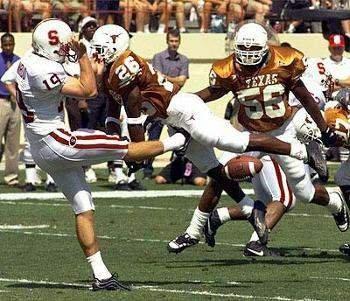Last Updated on August 16, 2023 by Robert Price
“It felt like I got kicked in the nuts.”
That’s the way many men describe the testicular pain they experience when starting Propecia/generic finasteride. Usually the pain is manageable, but in rare cases, it can be unbearable.
Now, my balding brother, put your balls on ice, grab your favorite pair or reading glasses if needed, and pay attention.
Here are the top 7 things you need to know about the testicular pain you’re having (or fear you may have) as a result of using Propecia/Finasteride.
1. It’s Fairly Common
Statistics vary. According to the Propecia studies, testicular pain was pretty rare—somewhere around 1% of users reported the symptom. But based on my research on forums, physician blogs, etc., the side effect is far more common than that. Both co-hosts of the popular hair loss radio show The Bald Truth state that they dealt with testicular pain when they began taking the medication. They also assert that the side effect is “not atypical” (2).
2. It Usually Goes Away within a Few Weeks
Just like the pain of a nut shot fades with time, so does this side effect, generally speaking.
3. The Cause is Unknown
But given that Propecia is a DHT inhibitor and that the testicles produce DHT, it may have to due to the fact that your DHT levels are decreasing. Also, Propecia can increase testosterone levels, which could account for your testicular pain.
4. The Degree of Severity Varies from Patient to Patient
The pain could be constant, or it could be intermittent. Obviously, if the pain is unrelenting, it’s going to be a more pressing concern.

Get the facts about fin in my finasteride review.
5. You Should Talk to Your Doctor
Because you’re not an idiot and you may want to reproduce one day. Moreover, the stakes are high, and you don’t want to gamble with your manhood. There’s a good chance your doc will just tell you to “suffer through it” and keep your eye on the prize—that lush head of hair you’ve been dreaming about, so to speak. But still, you should most definitely seek professional advice if you’re concerned.
6. If You Stop then Start Using The Drug Again, The Side Effect May Return
So before you quit or “take a break” from fin, you should to take that into consideration.
7. Permanent Cases are Super Rare
Even the anti-Propecia crowd doesn’t necessarily cite this as a “long-term” side effect as far as I know. But if you scour the internet, you will undoubtedly find reports of patients who’ve suffered “permanent” damage/pain as a result of using Propecia. That’s definitely not the norm, though.

Discover the 7 things you should know about hair loss lasers in my laser therapy review.
Propecia and Testicular Pain – Conclusion
Just like women have to endure unspeakable pain for the sake of bearing children, we men have to suffer in order to retain something just as important: our hair. Just kidding, of course. And by the way, plenty of women will breed with you, even if you’re bald as a cue tip.
Remember, this “pain” is probably only going to be of the temporary variety; that’s the good news. So hang in there, stay in touch with your doctor, and go ahead and take your balls off ice . . . now! I don’t want you getting frost bite. Until next time.
Based on your interest and present difficulty with finasteride, you may also like the following articles:
- A Long, Hard, and Honest Look at Propecia – Is It Worth the Risk?
- More Hair, Less Side Effects? A Topical Finasteride Review
- Low-Dose Finasteride – Five Things You Should Know Before Hopping on the Low-Dose Finasteride Bandwagon
- The 7 Best Ways to ATTACK Balding in 2023
- 14 Hair Loss Questions with Doctor Jeff Donovan – President of the Canadian Hair Loss Association
Robert Price is a writer, consumer advocate, and hair loss researcher with thousands of hours of experience in the field. His goal is to keep you out of the hair loss rabbit hole, underworld, or whatever you want to call it. He founded Hair Loss Daily, the unbiased hair loss blog, in 2016. You can learn more about Robert in the my story section of this website.

